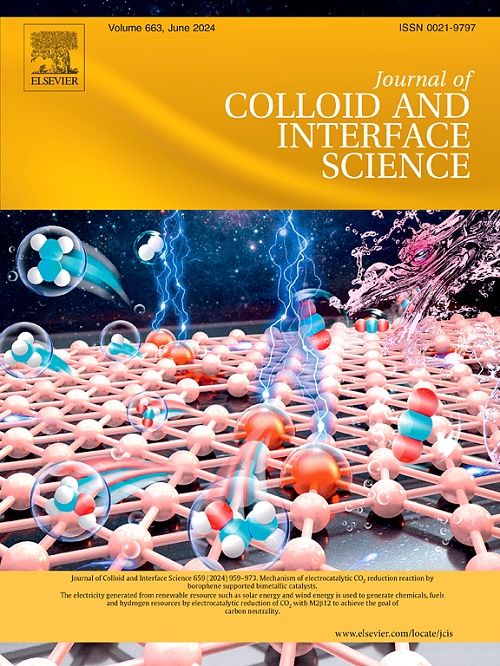Dual-engineered Ni-LiMn2O4 microsheets for sustainable lithium mining: Accelerated ion transport and robust electrochemical extraction in brine
IF 9.4
1区 化学
Q1 CHEMISTRY, PHYSICAL
引用次数: 0
Abstract
The surging demand for lithium in energy storage necessitates sustainable and efficient electrochemical lithium recovery from salt lakes. Herein, we develop Ni-doped LiMn2O4 microsheets (LNMO-MS) via a green bio-templated synthesis that integrates 2D morphology engineering and Ni-doping using chitosan biopolymer as a structural guide. This dual modulation addresses intrinsic limitations of conventional LiMn2O4. Ni doping induces [MnO6] octahedral contraction to stabilize the framework and enhance Li+ selectivity (Mg2+/Li+ separation factor: 401.32 at Mg2+/Li+ = 200), while the 2D architecture shortens Li+ diffusion paths, enabling 10-fold faster ion kinetics and improved charge transfer. In capacitive deionization (CDI), the LNMO-MS achieves a record Li+ adsorption capacity (4.12 mmol g−1), with low energy consumption (1.96 Wh moL−1 Li+), outperforming conventional LiMn2O4 electrodes. Real-world validation using Qarhan Salt Lake brine demonstrates practical viability, producing concentrated LiCl solutions (1 g L−1 Li, Mg2+/Li+=0.13) at 8.63 Wh·mol−1 Li+, while maintaining 92 % capacity retention over 200 cycles. The strategy of bio-guided 2D structuring and Ni doping establishes an energy-efficient, durable platform for selective lithium extraction, offering a sustainable solution to bridge lithium supply–demand gaps with minimized environmental footprint.

双工程镍- limn2o4微片可持续锂开采:加速离子传输和在盐水中稳健的电化学萃取
随着锂在储能领域的需求不断增长,需要从盐湖中实现可持续、高效的电化学锂回收。在此,我们以壳聚糖生物聚合物为结构导向,通过绿色生物模板合成,结合二维形态学工程和镍掺杂,开发了ni掺杂的LiMn2O4微片(LNMO-MS)。这种双调制解决了传统LiMn2O4固有的局限性。Ni掺杂诱导[MnO6]八面体收缩以稳定骨架并增强Li+选择性(Mg2+/Li+分离因子为401.32,Mg2+/Li+ = 200),而2D结构缩短了Li+扩散路径,使离子动力学速度提高了10倍,并改善了电荷转移。在电容去离子(CDI)中,LNMO-MS达到了创纪录的Li+吸附量(4.12 mmol g−1),能耗低(1.96 Wh moL−1 Li+),优于传统的LiMn2O4电极。使用察尔汗盐湖卤水进行的实际验证证明了实际可行性,在8.63 Wh·mol−1 Li+下产生浓缩LiCl溶液(1 g L−1 Li, Mg2+/Li+=0.13),同时在200次循环中保持92%的容量保持。生物导向二维结构和Ni掺杂策略为选择性锂提取建立了一个节能、耐用的平台,提供了一个可持续的解决方案,以最大限度地减少环境足迹,弥合锂供需缺口。
本文章由计算机程序翻译,如有差异,请以英文原文为准。
求助全文
约1分钟内获得全文
求助全文
来源期刊
CiteScore
16.10
自引率
7.10%
发文量
2568
审稿时长
2 months
期刊介绍:
The Journal of Colloid and Interface Science publishes original research findings on the fundamental principles of colloid and interface science, as well as innovative applications in various fields. The criteria for publication include impact, quality, novelty, and originality.
Emphasis:
The journal emphasizes fundamental scientific innovation within the following categories:
A.Colloidal Materials and Nanomaterials
B.Soft Colloidal and Self-Assembly Systems
C.Adsorption, Catalysis, and Electrochemistry
D.Interfacial Processes, Capillarity, and Wetting
E.Biomaterials and Nanomedicine
F.Energy Conversion and Storage, and Environmental Technologies

 求助内容:
求助内容: 应助结果提醒方式:
应助结果提醒方式:


